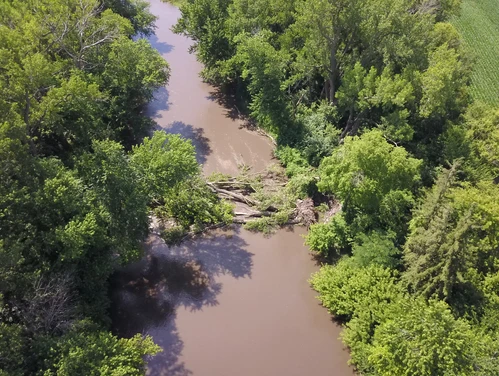Rivers across Iowa are swollen and swift with recent heavy rainfall. Some rivers are already dangerously high at or near flood stage, and more rivers could rise fast with chances of rain forecast later this week.
“All paddlers, even experienced paddlers, should stay off of rain swollen rivers,” said Todd Robertson, paddling instructor and Outreach Coordinator for Rivers Programs at the Iowa DNR. “If a river level is at the top or out of its bank, don’t try to paddle on it.”
Always know your river conditions before you go paddling. For the latest river conditions, visit the USGS site at https://waterdata.usgs.gov/ia/nwis/current/?type=flow or contact your local county conservation board for updates.
“Swollen rivers are super powerful with unpredictable current and tons of wood or branch piles coming downstream that can pull a paddler under or pin them underwater,” said Robertson. “These deadly hazards are usually found on outside river bends where currents are strongest, but can be found anywhere on rivers including at the base of bridge piers.”
Check the Iowa DNR’s interactive paddler's map for updates on real-time hazards like downed trees and log jams, strainers and bridge construction. Pay attention to the dam warning signs and know where dams are located before you head out on the water. Bridge construction projects across Iowa could close some sections of rivers this summer.
“Water trails across Iowa are impassable with large fallen trees including the South Skunk River Water Trail immediately downstream of Lincoln Way in Ames,”warns John Wenck, Water Trails Coordinator at the Iowa DNR.
Iowa DNR encourages paddlers to stay alert when paddling on Iowa Rivers. If you see potential hazards in a river, report them to John Wenck at John.Wenck@dnr.iowa.gov.
